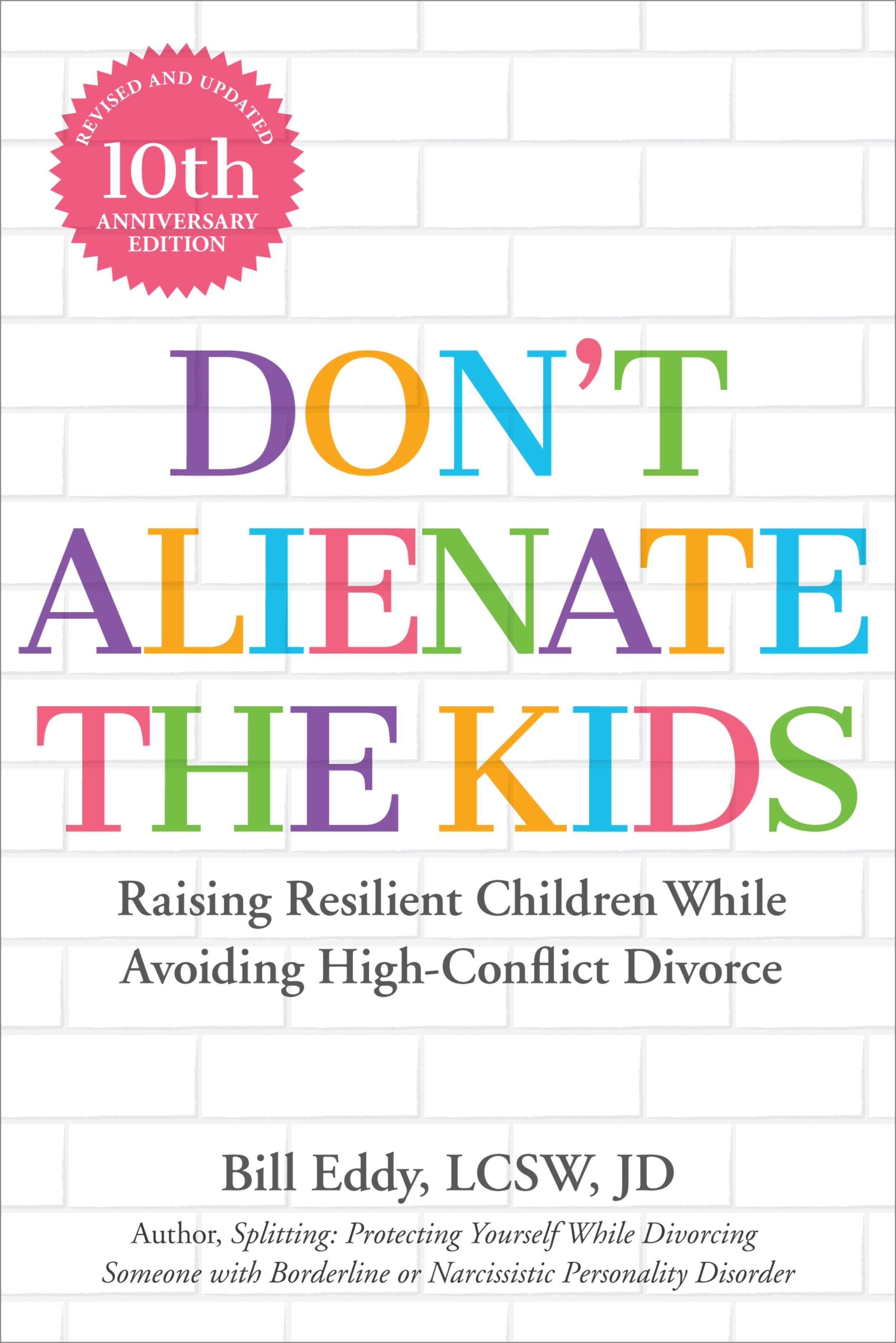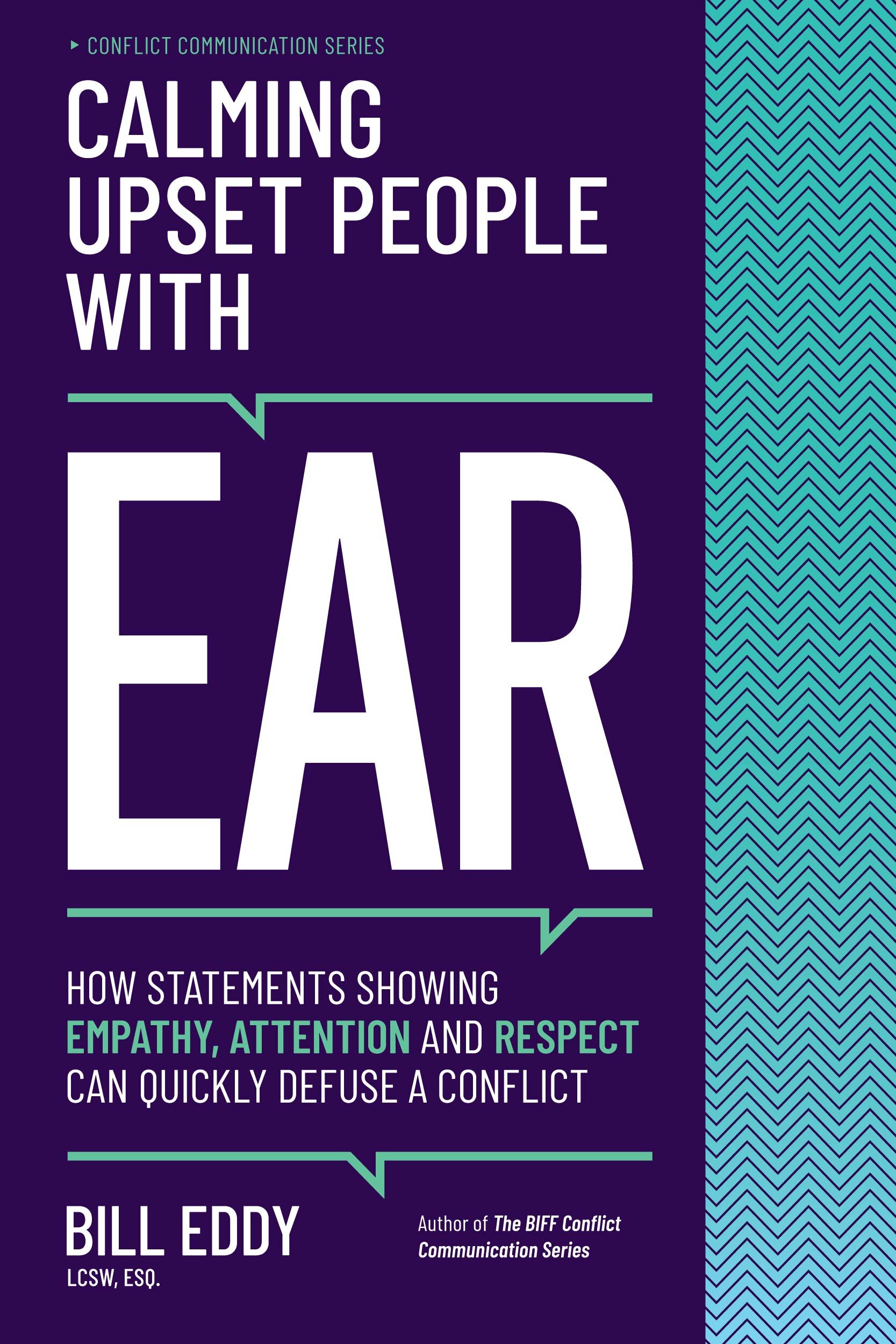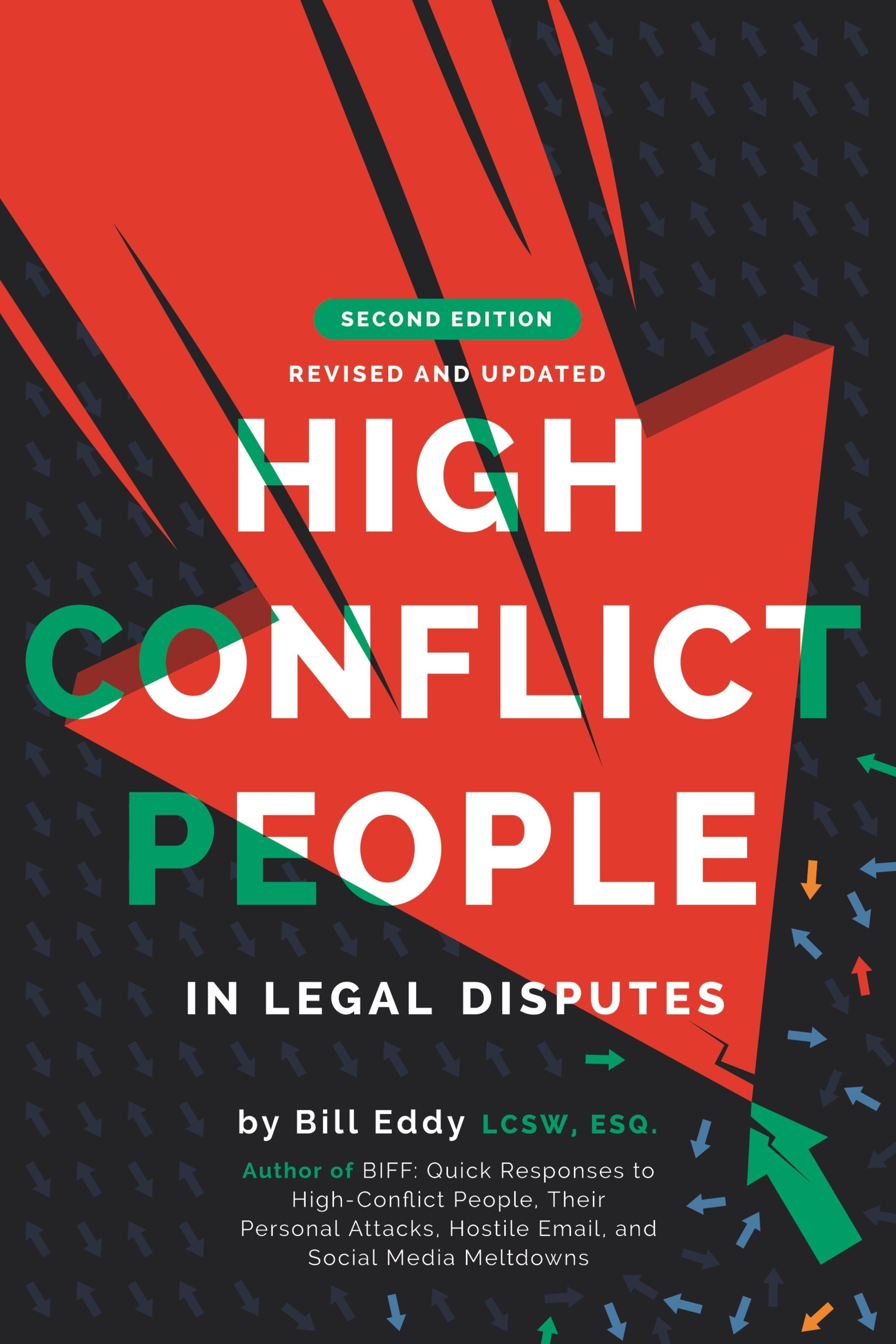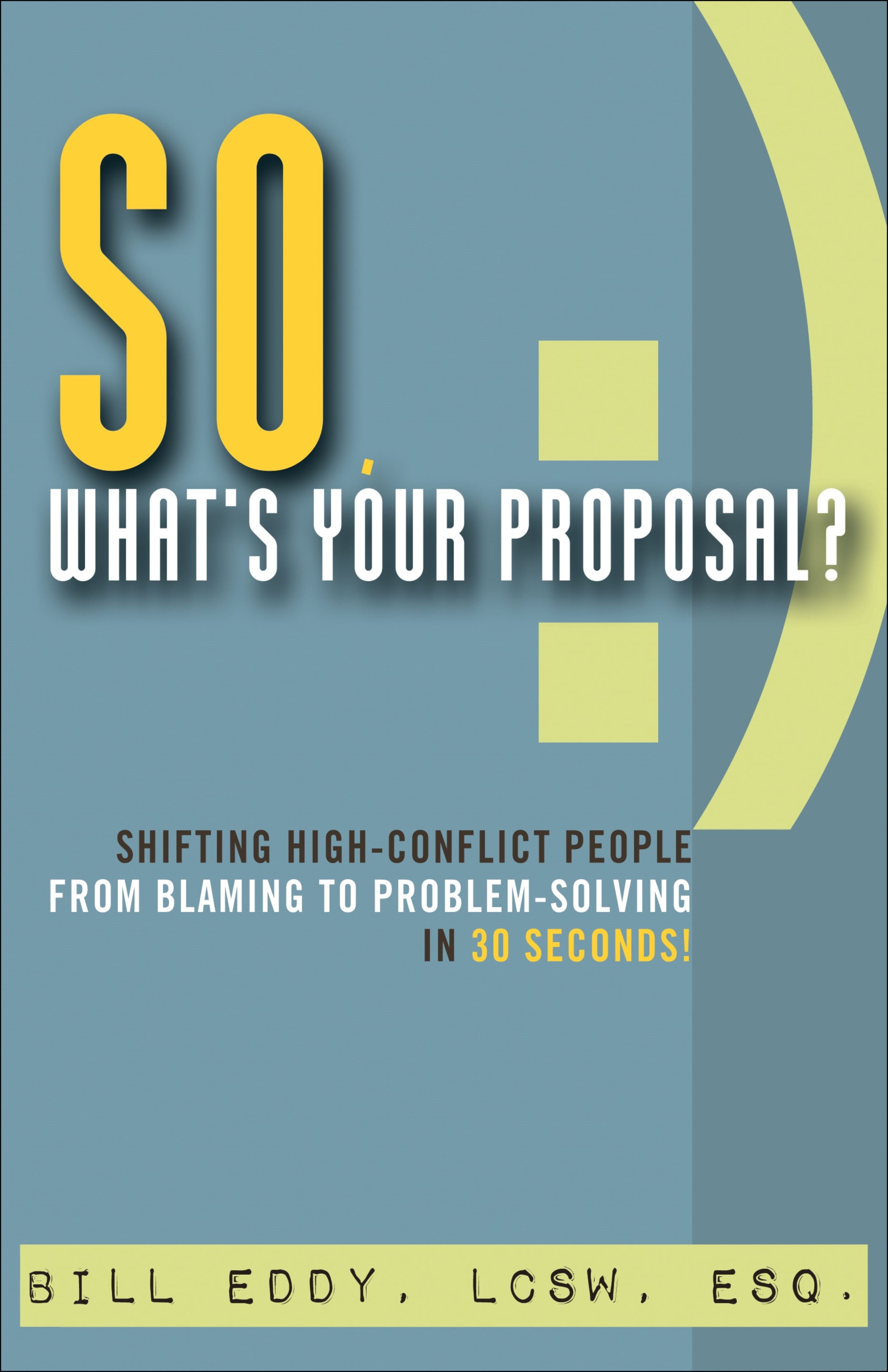The Engine of Child Alienation: Emotions are Contagious
©2020 Bill Eddy, LCSW, Esq.
One of the most confusing, heart-breaking, and misunderstood aspects of separation and divorce is when a child begins to resist or refuse to see one of his or her parents for no apparent reason. This is widely called alienation and is different from estrangement, when a child rejects a parent for an obvious, known reason like a pattern of serious child abuse. Even in most child abuse situations, the child does not reject the parent but just wants the abuse to stop.
So where does this alienation come from?
Why does the child start to feel so intensely negative about a parent who he or she once loved and displayed that love? This is a question that many families spend months or years fighting about in family courts around the world. Since this problem seems to be increasing, it is important that people (parents and professionals) become educated about it and look for solutions instead of blame.
I explain how the process of fighting over “who is the bad parent” in family courts is part of the problem, rather than the solution. One of the starting points is to understand what behavior may be driving the alienation and how this behavior must be changed or the child must be protected from it. I explain all of this in my book about alienation which is now in its second edition: Don’t Alienate the Kids! Raising Resilient Children While Avoiding High Conflict Divorce.
One of the key problematic behaviors is unmanaged emotions, because emotions can be contagious. This isn’t just the parents either. Professionals easily get caught up in the emotions of anger and frustration in a court battle over alienation, so that their emotions often further the conflict and get passed onto the children. The following is an short excerpt from the book explaining this problem.
Emotions Are Contagious
“I WISH YOU WOULD F--ING DIE!” Olivia screamed at the top of her lungs, as her husband Colin loaded their tearful 10-year-old daughter, Samantha, into his car for their day together. The neighbors could easily hear Olivia as she stood at the front door of the house they used to share just a few weeks ago.
They had been a stable family with undercurrents of unhappiness. Olivia tended to feel frustrated that she was a successful businesswoman and Colin had a job working at an auto parts store. Then Olivia discovered that Colin was an internet pornography addict – adult pornography. She immediately told him to move out and the marriage was ended. She only allowed him to see Samantha one day a week, without any overnights, because she was concerned he would molest their daughter. There were no allegations that Colin had ever previously abused her, and he was the one who had cared for Samantha the majority of the time when Olivia was away on business trips.
Over the next few years, Olivia was very careful not to tell anyone, including Samantha, the reason that she was divorcing her father. But she freely shared her emotions with Samantha. By the time she was 14, Samantha refused to have any contact with her father. When the court ordered her into counseling with her father, Samantha told him “You destroyed my life!” But she couldn’t describe what he had done to destroy her life. She just knew that she hated him with all her heart and considered him an inferior person. The counseling failed and she refused to see him at all for several years.
Emotions are contagious. And high-conflict emotions are highly contagious!
The stronger the emotions, the more likely we are to catch them – good and bad. As human beings, we’re hard-wired to be influenced by each other’s emotions. The closer the relationship, the more easily we absorb what each other is feeling – mostly without even realizing it. And the more the emotional messages are repeated, the more then are absorbed, like a TV commercial. And if these messages are all you hear on a subject—in isolation from any other messages on the subject—then their impact is even more powerful. Such emotional repetition in isolation is what I believe is the core of child alienation, for the reasons I describe below.
Brain research has discovered much about how this seems to happen.
The amygdala in our brain is like a smoke detector.
What we see, hear and feel is always being immediately checked for signs of danger by the amygdala, much faster than we can consciously think. Once the amygdala senses danger, it can instantly shift all of our attention to protecting ourselves by setting off the “fight, flight or freeze response” in our brains – within a fraction of a second!
You actually have two of these almond-shaped amygdalae – one in the middle of your brain’s left hemisphere and one in the middle of your right hemisphere. The right brain is the side that is more responsive to non-verbal information (facial expressions, tone of voice, hand gestures) and more active with negative emotions.
Therefore, it’s not surprising that research shows the right amygdala is extremely sensitive to other people’s facial expressions of fear and anger - more so than any other emotions. When someone else’s face looks extremely angry or extremely scared, it instantly sets off your amygdala and your brain drops whatever you were thinking about and focuses all of your attention on whether you need to fight or flee the situation – unless your brain is used to the threat and used to over-riding it with its higher functioning prefrontal cortext. This is the part of the brain that’s just behind your forehead and includes more complex thinking, and which can overrule the amygdala.
But the brain remembers! When you face a new event that reminds the amygdala of a previous fearful event, the amygdala triggers the fight, flight, or freeze response. It primarily remembers the emotions associated with the prior experience – especially if fear was part of the memory.
Anger is Contagious
When Samantha heard her mother screaming at Colin, you can imagine that her amygdala remembered danger! How many times did it take for her to associate her father with danger triggered by her mother’s angry emotions?
But Samantha wasn’t initially refusing to see her father. In fact, she seemed to enjoy her visits with him on Saturdays. As long as he didn’t ask for more time with Samantha, Olivia seemed to calm down. Of course, Olivia wouldn’t let him have Samantha for any overnights.
For about a year, Colin accepted this situation. Then he went to court to increase his parenting time with Samantha. He asked for a 50-50 shared parenting schedule, since he had had more than 50% sometimes before their separation, when Olivia was away on business trips.
Olivia was absolutely furious that he would make such a request. She insisted on an evaluation of his sexual behavior and risk to their daughter. The result of these evaluations was that he clearly had no sexual interest in children, and no history of any abusive behavior in the ten years he had cared for her. In fact, there were indications that he had been the more emotionally nurturing parent, while Olivia was more driven and focused on her career.
But throughout the evaluation process, which dragged on for six months, Olivia was furious that Colin was persisting in asking for 50% of the parenting time and Samantha started to emotionally withdraw from Colin . At first he noticed that she didn’t want to discuss as much with him about her school activities – which Olivia had forbidden him to attend (as a potential child-molester in her mind).
Then, Samantha also started getting angry with Colin during their visits, telling him to stop pressuring Olivia for more time. He tried to avoid discuss their parenting dispute with Samantha, but apparently Olivia was discussing it with her. Was she mostly fearful for her daughter, because of his sexual addiction? Or was she mostly angry with her ex-husband for humiliating her with his problem? It seemed that Samantha was mostly absorbing her mother’s anger.
Once, when there was going to be a court hearing, Samantha angrily confronted Colin on their Saturday together: “Why are you taking us back to court?” He said: “That’s between me and your mother.” He never mentioned anything about court to her.
Colin brought this issue up in court. The judge asked Olivia what she told Samantha about her father.
“She doesn’t know anything about his problem. I just told her that he has a problem that I don’t have, and that I can’t tell her about it until she’s 18,” Olivia said.
The judge responded: “Don’t you think that would get her thinking that there’s danger associated with her father?”
“No,” she responded. “Any fear she has of him is caused by his insensitivity to her – and who knows what else. She tells me she doesn’t want to see him any more than one day a week, but he won’t listen to her. And she’s starting to complain about that. He brought this all on himself. He has only himself to blame.”
The judge told Olivia not to tell Samantha anything about court hearings – not even saying when they were occurring. When they went back to court the next time, Colin said Samantha didn’t seem to know about it. Olivia had changed a bad behavior.
But Samantha started asking to skip a Saturday, here and there. She would call Colin during the week and ask him to let her miss a visit, explaining she had homework or a friend she needed to see. At first Colin was angry with her.
“What do you mean, you don’t want to see me. Did your mother tell you to say that?”
Samantha was angry back: “Stop blaming Mom for everything. Now you’ve really made me angry.”
Colin felt caught in a bind. If he said “No” to her request, then Samantha would be angry with him for “forcing” a visit with him. If he said “Yes,” then he wouldn’t see her and couldn’t try to strengthen his fading relationship with her.
By age 14, she stopped visiting him altogether. He would call her and she would talk to him on the phone. But she refused to spend any time with him. After the failed counseling sessions described above, Colin gave up trying to get her to spend time with him.
They still lived in the same neighborhood. One day he happened to see her walking home from school with a friend as he drove by. Maybe she missed him by now, he thought. But when she saw him driving by, she raised her hand and gave him the finger!
Samantha seemed to have caught her mother’s unrestrained anger, and perhaps a bit of her father’s as well. It was hard to tell if her mother’s anger was mostly based on protecting her daughter, or mostly based on her anger at Colin for embarrassing her with his adult sexual addiction. In either case, it appears that Samantha picked up her mother’s anger more than any other emotion.
But are other emotions also contagious?
Brain research indicates that anxiety (fear) is the most contagious of all. When you are anxious is when you are most likely to pick up other people’s emotions. The stronger the fear shown in someone else’s face, the more intense your amygdala’s response will be. This makes sense as a human survival mechanism. We are much more able to survive as a group if we can instantly pick up each other’s warning signs and take immediate action – often without a word even being spoken.
For more on understanding how emotions get transferred to children in high conflict separation and divorce, and what to do about this problem, please see
Don’t Alienate the Kids! Raising Resilient Children While Avoiding High Conflict Divorce, 2nd Ed. and see our New Ways for Families® method of teaching “managed emotions” to both parents and their children at: www.highconflictinstitute.com.)
Bill Eddy, LCSW, Esq. is the co-founder and Chief Innovation Officer of the High Conflict Institute in San Diego, California. He pioneered the High Conflict Personality Theory (HCP) and has become an expert on managing disputes involving people with high conflict personalities. He was the Senior Family Mediator at the National Conflict Resolution Center for 15 years, a Certified Family Law Specialist lawyer representing clients in family court for 15 years, and a licensed clinical social worker therapist with twelve years’ experience.
















